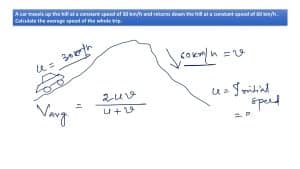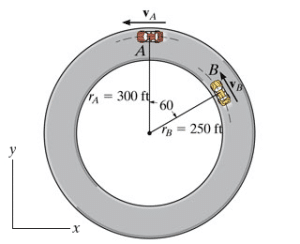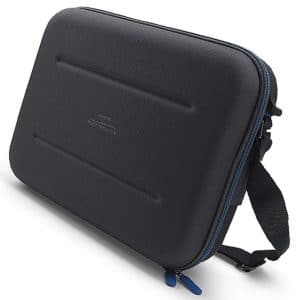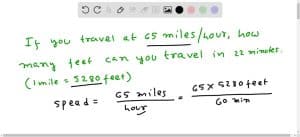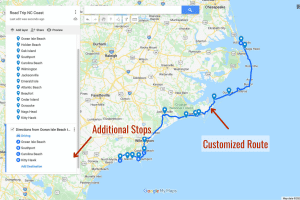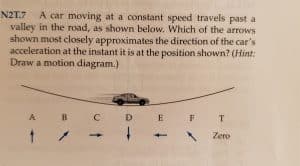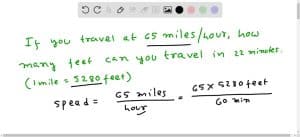Welcome to Hosteliest, your ultimate travel guide. Today, let’s delve into a unique topic: “A Traveling Sinusoidal Wave is Described by the Wave Function”. Enhance your understanding of motion as we journey through the mathematical beauty that shapes our world.
Title: Understanding the Concept: A Traveling Sinusoidal Wave is Described by the Wave Function
Are you intrigued by the magic of waves? Do terms like sinusoidal, wave function, or traveling wave make you curious? If so, you’re in the right place! This article will guide you through the fascinating world of sinusoidal waves and their functions. So, buckle up for an enjoyable scientific journey!
What are we talking about?
The science of understanding waves revolves around three primary aspects – amplitude, frequency, and phase. When we combine these three elements, we get something magical – a wave function. And if it travels, we call it “a traveling sinusoidal wave“.
A traveling sinusoidal wave is described by the wave function. But what does that mean exactly? Well, you’re about to find out.
Exploring the Sinusoidal Wave
Imagine you’re dropping a stone into a calm lake. The ripples created on the water surface resemble the sinusoidal wave. They are named so because they follow the pattern of sine and cosine functions.
The term ‘sinusoidal’ is derived from the mathematical function Sine, denoted as sin(x). A sinusoidal wave is smooth, continuous, and alternates between the maximum and minimum values in a regular manner. In simpler words, it’s like the rhythmic motion of a swing.
The Wave Function: The Soul of a Wave
One cannot discuss a wave without referring to its wave function. It’s like trying to understand a book with the story missing. The wave function defines a wave. It describes everything about the wave – how it looks, how it behaves, and where it might be at any given time.
In the case of a sinusoidal wave, the wave function would express the shape of the wave (the sinusoidal pattern), its frequency or speed, the amplitude (how ‘tall’ the wave is), and its phase (where in its cycle the wave is at t=0). It is through the wave function that we understand how a traveling sinusoidal wave is described.
Traveling Wave: The Journey of a Sinusoidal Wave
A traveling wave is one that moves in space. Unlike standing waves, which stay in one location and merely oscillate back and forth, traveling waves move in a particular direction. This movement gives them the power to transfer energy from one point to another.
To understand how a traveling sinusoidal wave works, think of it as a wave moving across the water surface in a straight line. Just like dropping a stone creates ripples, a traveling sinusoidal wave radiates away from the initial source, carrying energy with it.
Bringing It All Together
Now that we’ve individually explored sinusoidal waves, the wave function, and traveling waves, it’s easy to see how a traveling sinusoidal wave is described by the wave function. This description involves capturing the wave’s properties (like frequency, amplitude, and phase) and further applying them to describe how the wave travels in space.
By understanding these concepts, you are not just exploring a fascinating scientific phenomenon but also taking the first steps in understanding the underlying principles of various disciplines such as sound, light, and even quantum mechanics.
So, next time you throw a pebble into a pond, watch the ripples and remember – you’re looking at a real-life example of a traveling sinusoidal wave. Happy observing!
Understanding the Concept of a Traveling Sinusoidal Wave: An Essential Guide for the Modern Traveler
The term ‘Traveling Sinusoidal Wave‘ may seem out of place in a travel and hotel context. However, it is an apt metaphor to describe the ups and downs, or rather the crests and troughs, experienced during journeys.
‘Traveling Sinusoidal Wave‘ in Physics represents a wave pattern that moves along a medium from one end to another. When applied to travel and hospitality, this concept helps explain the cyclical nature of the industry, which soars high during the peak season (crests) and dips during off-peak times (troughs).
Understanding this analogy can help a modern traveler make informed decisions about when and where to travel. Let’s delve into some instances where the ‘Traveling Sinusoidal Wave‘ theory applies:
Hotel Booking Rates: Just like a sinusoidal wave, hotel booking rates vary with time. During peak tourist seasons, rates can skyrocket (crest), while during off-peak periods, you may find great deals and discounts (trough). Hence, a modern traveler who grasps this concept can plan their travels during off-peak seasons to enjoy cost-effective accommodation.
Tourist Popularity: Similarly, popular tourist spots tend to have higher footfall during certain seasons. For example, beach destinations are more crowded during summer, representing the crest of a sinusoidal wave. Conversely, winter months could be likened to the troughs. A discerning traveler who understands these trends can choose to visit such places during the off-seasons, thus avoiding rush and enjoying quieter moments.
In conclusion, the ‘Traveling Sinusoidal Wave‘ concept provides a scientific perspective to understanding the cyclic nature of travel and hospitality trends. Knowledge of such patterns enables modern travelers to strategize and enhance their travel experiences while potentially saving on costs.
Understanding Sinusoidal Waves in the Context of Travel
In understanding sinusoidal waves within the context of travel, it’s important to first define what a sinusoidal wave is. Essentially, it’s a mathematical curve that describes a smooth periodic oscillation. This can be related to various aspects of travel, such as the ebb and flow of tourist seasons, or the fluctuating prices of airline tickets. The key to harnessing the power of sinusoidal waves in this context revolves around understanding their predictable nature and capitalizing on the patterns they reveal.
The Influence of Sinusoidal Waves on Hotel Pricing
One of the most significant ways sinusoidal waves have an impact within the travel industry is through hotel pricing. Hotels often adjust their pricing models based on various factors, including seasonality, demand, and competition. These fluctuations create a sinusoidal wave pattern that savvy travelers can use to their advantage. The pattern typically shows lower prices during off-peak seasons and higher prices during peak seasons. Thus, understanding this sinusoidal wave pattern can help travelers book hotels at the most cost-effective times.
How Sinusoidal Waves Affect Air Travel
Another area where sinusoidal waves prove influential in the world of travel is air travel. Similar to hotel pricing, airline ticket prices also follow a sinusoidal wave pattern due to various factors like seasonality, demand, and fuel costs. Airlines frequently adjust their pricing strategy based on these variables, creating a pattern that informed travelers can use to save money on airline tickets. An understanding of this wave function allows travelers to predict when ticket prices are likely to rise and fall, thus planning their travel accordingly and saving money.
Frequently Asked Questions (FAQ)
In conclusion, understanding the concept of a traveling sinusoidal wave as described by the wave function can significantly enhance your comprehension of the patterns and rhythms in nature, which are not just limited to physics but also extensively applicable to the hotel and travel industry. By recognising these patterns, we can forecast trends, enabling us to make decisive choices regarding our travel plans. Remember, like the waves, the travel experience is cyclical – there will be highs and lows. Yet, that’s what makes the journey diverse and exciting. Consider this wave function the next time you chart your course in the vast ocean of traveling, and make the most of every wave that comes your way. Happy traveling!
Error: El post actual no se encuentra en el array de posts.



















